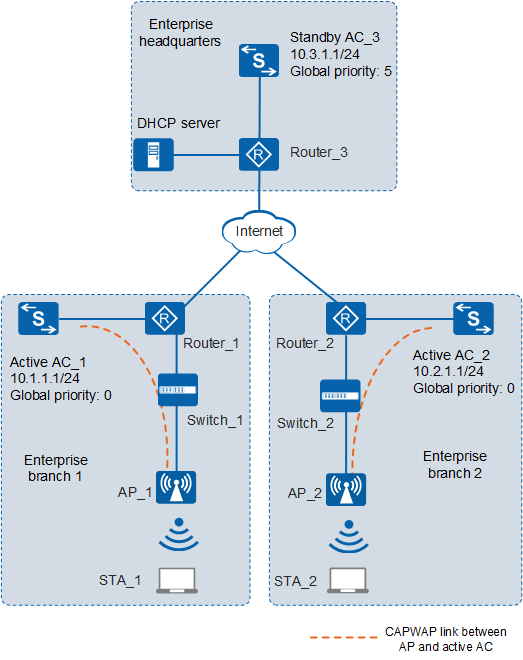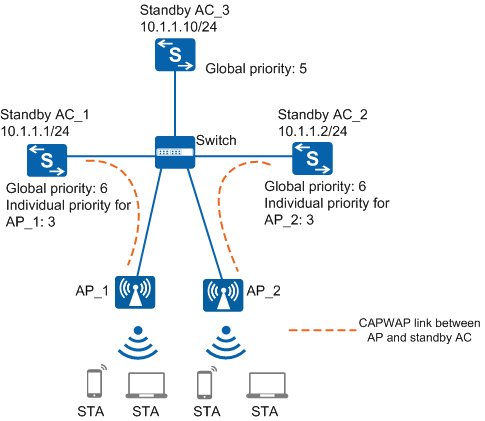Typical Application Scenarios for N+1 Backup
APs and ACs in Different Network Segments
A large enterprise has branches in different areas. ACs are deployed in the branches to manage APs and provide WLAN access and e-mail services. These services provided on the WLAN require low network reliability and allow temporary service interruption. In this scenario, the enterprise can deploy a high performance AC at the headquarters as a standby AC to provide backup services for active ACs in the branches. This reduces device purchase costs.
As shown in Figure 1, ACs of the two branches are on different network segments. AC_1 in branch 1 and AC_2 in branch 2 respectively work as the active AC of AP_1 and AP_2. AC_3 in the headquarters is a high performance AC and serves as the standby AC of AP_1 and AP_2. When the network runs properly, AP_1 and AP_2 sets up a CAPWAP link with AC_1 and AC_2 respectively. When the CAPWAP link on AC_1 or AC_2 fails, AP_1 or AP_2 sets up a CAPWAP link with AC_3. AC_3 replaces AC_1 or AC_2 to provide services for AP_1 or AP_2.
Each AP can establish a CAPWAP link with only one AC at one time.
APs and ACs in the Same Network Segment
The waiting hall of an airport accommodates a large number of users. Multiple ACs manage a large number of APs that provide WLAN access services. These free-of-charge services require low network reliability and allow temporary service interruption. In this situation, a high performance AC can be deployed as a standby AC to provide backup services for other ACs. This reduces device purchase costs.
As shown in Figure 2, all ACs are in the same network segment. AC_1 and AC_2 function as the active AC of AP_1 and AP_2 respectively. AC_3 is a high performance AC and works as the standby AC of AP_1 and AP_2. When the network runs properly, AP_1 and AP_2 sets up a CAPWAP link with AC_1 and AC_2 respectively. When the CAPWAP link on AC_1 or AC_2 fails, AP_1 or AP_2 sets up a CAPWAP link with AC_3. AC_3 replaces AC_1 or AC_2 to provide services for AP_1 or AP_2.
Each AP can establish a CAPWAP link with only one AC at one time.

